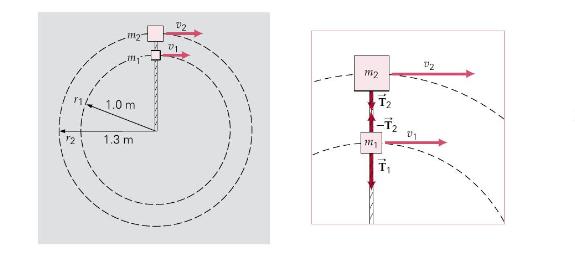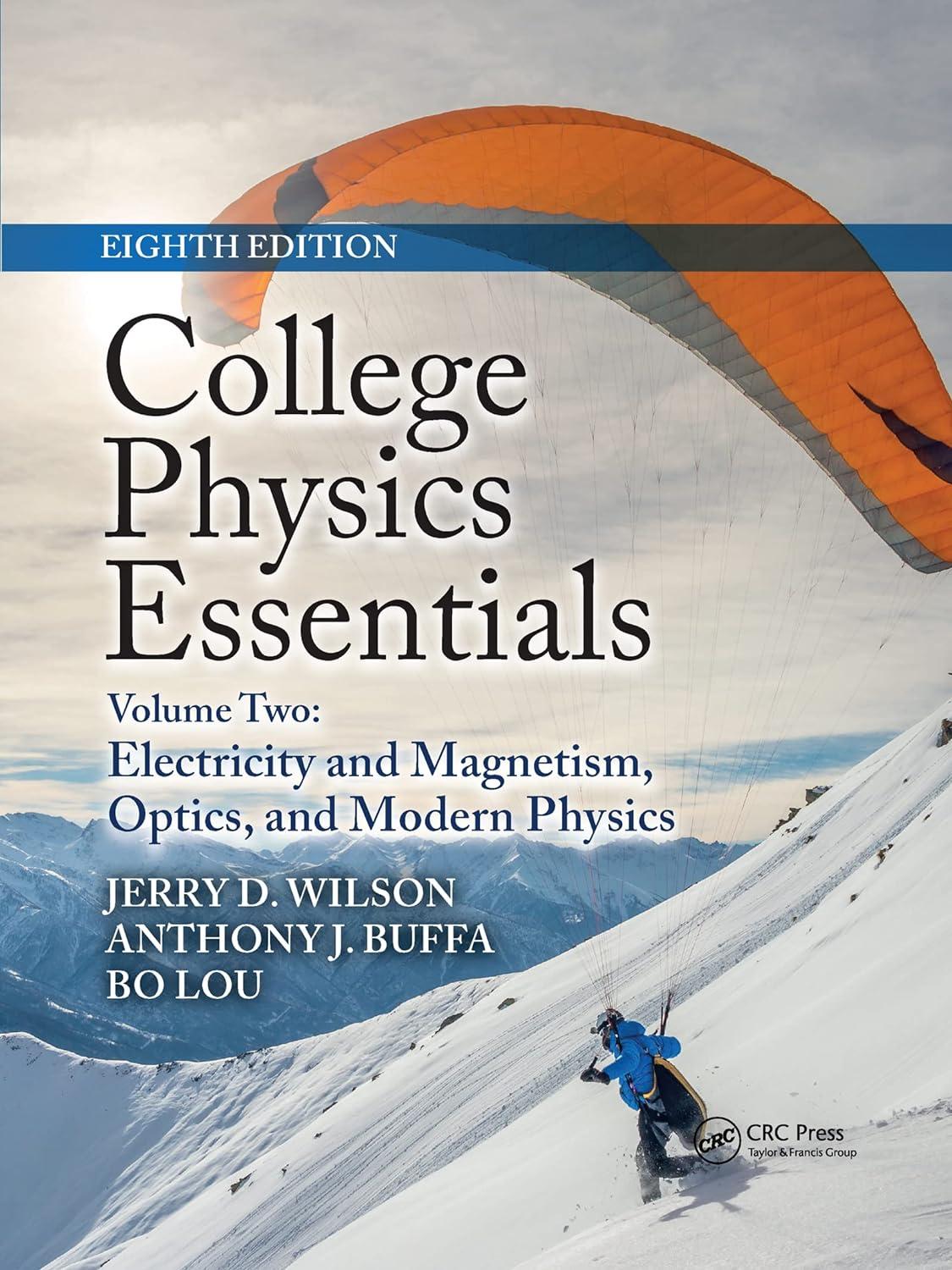Suppose that two masses, (m_{1}=2.5 mathrm{~kg}) and (m_{2}=3.5 mathrm{~kg}), are connected by light strings and are in
Question:
Suppose that two masses, \(m_{1}=2.5 \mathrm{~kg}\) and \(m_{2}=3.5 \mathrm{~kg}\), are connected by light strings and are in uniform circular motion on a horizontal frictionless surface as illustrated in Figure 7.13, where \(r_{1}=1.0 \mathrm{~m}\) and \(r_{2}=1.3 \mathrm{~m}\). The tension forces acting on the masses are \(T_{1}=4.5 \mathrm{~N}\) and \(T_{2}=2.9 \mathrm{~N}\), which are the respective tensions in the strings. Find the magnitude of the centripetal acceleration and the tangential speed of
(a) mass \(m_{2}\) and
(b) mass \(m_{1}\).
THINKING IT THROUGH. The centripetal forces on the masses are supplied by the tensions ( \(T_{1}\) and \(T_{2}\) ) in the strings. By isolating the masses, \(a_{c}\) for each mass can be found, because the net force on a mass is equal to the mass's centripetal force \(\left(F_{\mathrm{c}}=m a_{c}\right)\). The tangential speeds can then be found, since the radii are known \(\left(a_{c}=v^{2} / r\right)\)
Step by Step Answer:

College Physics Essentials Electricity And Magnetism Optics Modern Physics Volume Two
ISBN: 9781032337272
8th Edition
Authors: Jerry D. Wilson, Anthony J. Buffa, Bo Lou





